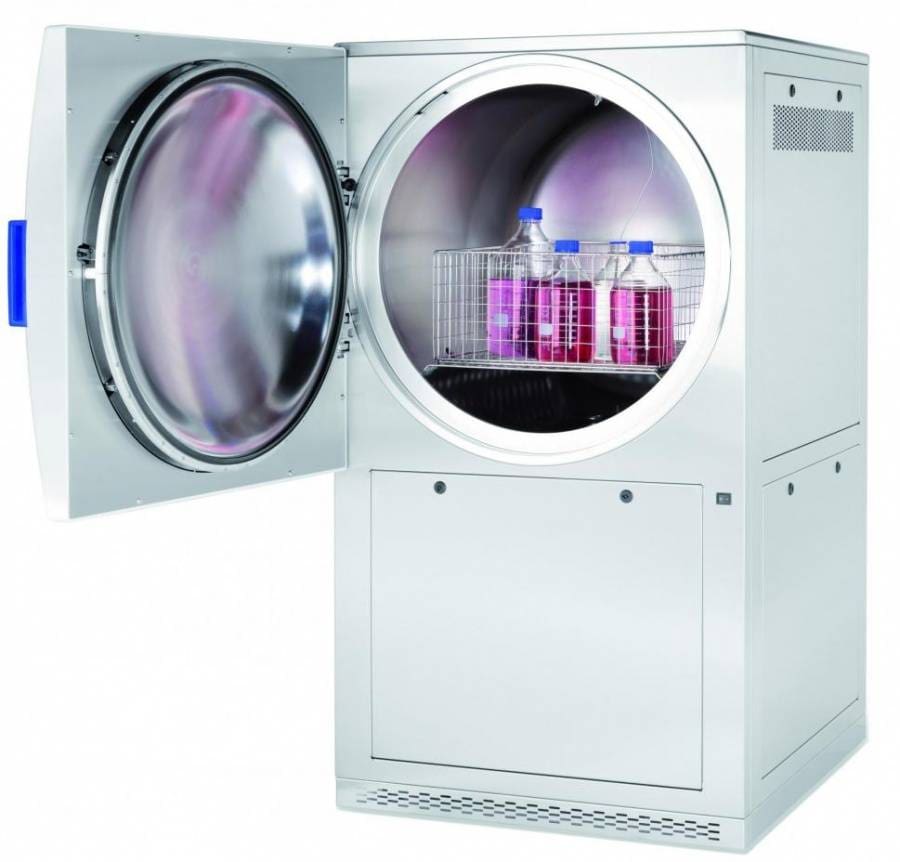
Sterilization of liquids, solids, waste in disposal bags and hazardous biological substances
The sterilization process in an autoclave can be rather difficult. For example, when sterilizing liquids or solids (instruments, glassware, filters or textiles) for later use in the lab, the sterilization process must ensure to produce a sterile product, reproducible at any time. Products sterilized for use in labs cannot be tested for sterility, as this would contaminate them again and thus they could not be used in the lab any longer. Validation of steam sterilization processes has become an increasingly important issue to ensure reproducible results that can be verified. Furthermore, safety aspects must generally be considered when autoclaving, and in particular when sterilizing liquids. Sterilization is generally done at a temperature of 121⁰C. This corresponds to a steam pressure of approx. 2 bar. Such high temperatures and the ensuing pressure may pose considerable risk potential for the operator, if the autoclaving process has design flaws or is not executed properly.
Sterilization of liquids and liquid waste in bottles
Sterilizing liquids is one of the most demanding tasks in the lab. Sterilization processes may take a very long time, bottles must be open or at least vented, part of the liquid will boil away, liquids may boil over and bottles may even burst. Another issue to be addressed is, whether the liquids inside the bottles even reach the required sterilization temperature (e.g. 121°C), and when they may be safely taken out of the autoclave after completion of the sterilization process.
Viewing the sterilization process for liquids, it splits into three phases:
1. Heating phase and equilibration time (H)
2. Sterilization phase, e.g. 121⁰C for 20 minutes (S)
3. Cooling-down phase to a safe removal temperature (C)
Sterilization process
Illustration 1 details the individual phases by means of a graphic display. The blue line represents the temperature inside the pressure vessel of the autoclave, the red line the temperature inside the liquid. It is clearly visible that the temperature inside the pressure vessel of the autoclave reaches the required temperature of 121⁰C quickly, whereas the liquids inside the bottles need a much longer time to reach sterilization temperature. During the heating-up time, thermal energy of steam is transferred to the bottles by means of condensation of the steam. This condensation process and the ensuing thermal transfer require quite some time, explaining the time lag between the mere heating-up of the pressure vessel and the heating-up of the liquid itself. The time required to achieve the same temperatures inside the pressure vessel of the autoclave and inside the liquids is called equilibration time.
Further Information:
https://www.systec-lab.com/news-events/sterilization-of-liquids-solids-waste-in-disposal-bags-and-hazardous-biological-substances/